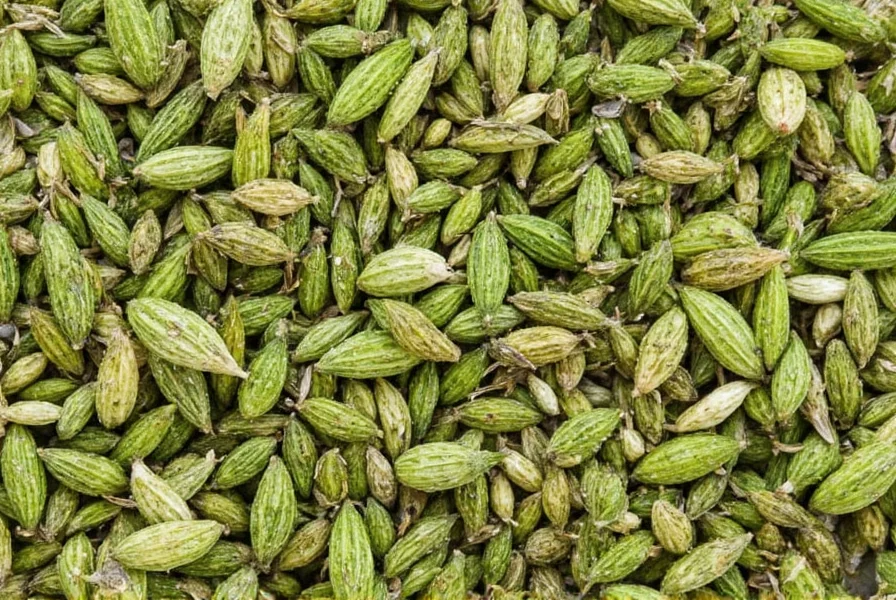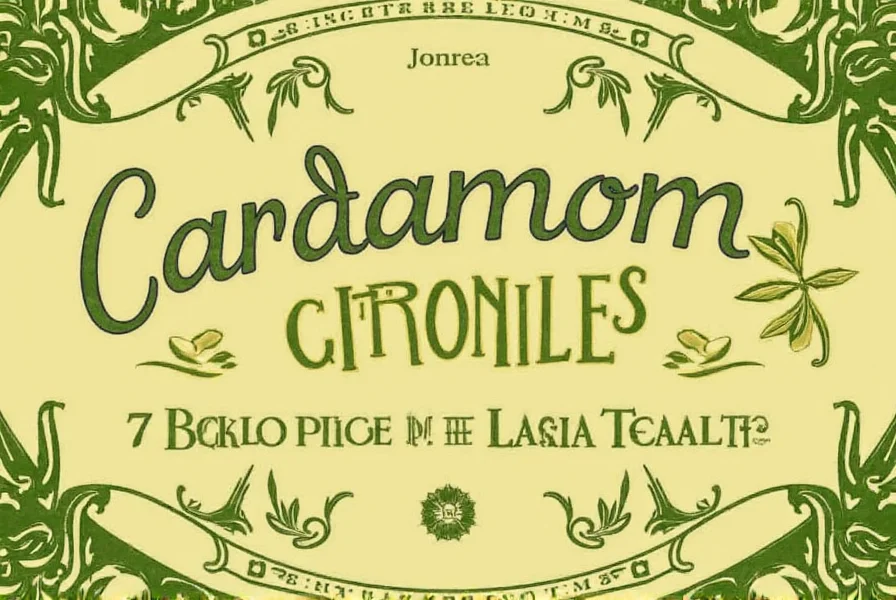What is Cardamom? Your Complete Guide to Using This Royal Spice
Cardamom is a versatile spice used worldwide in both sweet and savory dishes, prized for its floral, citrusy, and minty aroma. Native to southern India, it's been valued for thousands of years in Ayurvedic medicine, Scandinavian baking, and Middle Eastern coffee traditions. This guide covers how to use cardamom effectively, its health benefits, storage tips, and recipes to elevate your cooking.
How to Use Cardamom in Cooking
Cardamom's unique flavor works in both sweet and savory dishes. Here's how to maximize its potential:
- Grind Fresh Pods: Crack open whole pods and grind the seeds for maximum flavor. Use a mortar and pestle or spice grinder.
- Toast Whole Pods: Lightly toast pods in a dry pan before grinding to release aromatic oils.
- Beverages: Add 1-2 crushed pods to tea, coffee, or hot chocolate for a fragrant twist.
- Baking: Mix ground cardamom with sugar for cakes, cookies, and pastries. Scandinavian cardamom buns are a classic example.
- Savory Dishes: Use whole pods in rice dishes like biryani or curries. Black cardamom adds smoky depth to meat stews.
Types of Cardamom: Green vs Black
| Type | Origin | Flavor Profile | Best Uses |
|---|---|---|---|
| Green Cardamom | India, Guatemala | Sweet, floral, citrusy | Baking, desserts, chai, rice dishes |
| Black Cardamom | Nepal, Eastern Himalayas | Smoky, camphor-like, earthy | Curries, biryanis, meat stews, spice blends |

Health Benefits of Cardamom
- Antioxidant Powerhouse: Reduces oxidative stress and inflammation
- Digestive Aid: Alleviates bloating and indigestion
- Breath Freshener: Natural remedy for bad breath
- Heart Health: May help regulate blood pressure
- Respiratory Support: Compounds like cineole support lung health
Buying and Storing Cardamom
Whole Pods vs Ground
- Whole Pods: Last 12-18 months when stored properly. Choose plump, vibrant green pods without cracks.
- Ground Cardamom: Loses potency quickly. Use within 3-6 months. Best for quick recipes where fresh grinding isn't possible.
| Brand | Type | Key Features | Best For | Price Range |
|---|---|---|---|---|
| Simply Organic | Green | Certified organic, ethically sourced | Baking, beverages | $-$$ |
| Penzeys Spices | Green | Highly aromatic, fresh packaging | Cooking, tea | $$ |
| McCormick | Green/Black | Widely available, affordable | General use | $ |
| Viva Naturals | Green | Pesticide-free, eco-friendly packaging | Health-conscious cooks | $$ |
| Kashmiri Organics | Black | Hand-harvested, strong smoky notes | Meat dishes, curries | $$ |
Storage Tips for Maximum Freshness
- Store in airtight glass jars away from light and moisture
- Keep whole pods in a cool, dark pantry (never near heat sources)
- Grind only what you need immediately for best flavor
- Ground cardamom should be used within 3-6 months
5 Must-Try Cardamom Recipes
- Cardamom Chai: Brew with black tea, milk, ginger, and cinnamon for a warming beverage
- Swedish Cardamom Buns: Soft rolls with cardamom-infused dough and orange zest topping
- Saffron Rice with Cardamom: Fragrant side dish for festive meals
- Cardamom-Spiced Carrot Cake: Adds warmth without overpowering natural sweetness
- Lamb Tagine with Cardamom: Moroccan-style slow-cooked meat with aromatic spices
Frequently Asked Questions
What makes cardamom the "Queen of Spices"?
Cardamom earns its royal title through its complex, multi-layered flavor profile that combines floral, citrus, and mint notes with subtle warmth. Unlike many spices that offer a single dominant flavor, cardamom provides a sophisticated aromatic experience that enhances both sweet and savory dishes without overwhelming them.
How can I maximize cardamom's flavor in my cooking?
For maximum flavor impact, lightly toast whole pods before grinding them fresh. Use the entire pod (seeds and husk) when simmering in liquids like chai or rice dishes, but remove the husks before serving. For baking, crush the seeds and rub them into sugar to distribute the flavor evenly throughout your recipe.
What's the difference between green and black cardamom beyond flavor?
Green cardamom is harvested earlier and dried gently, preserving its delicate floral notes. Black cardamom undergoes a smoking process during drying, which creates its distinctive smoky flavor. Green cardamom works best in lighter dishes and desserts, while black cardamom's robust character stands up well to hearty meats and long-cooked stews.
Can I substitute ground cardamom for whole pods?
Yes, but with adjustments: 10 whole pods equal approximately 1½ teaspoons of ground cardamom. However, whole pods offer superior flavor complexity, especially in slow-cooked dishes where the husk imparts subtle notes that ground cardamom lacks. For best results, substitute only when necessary and increase the amount slightly for equivalent flavor impact.
How do I know if my cardamom is still fresh?
Fresh green cardamom pods should feel plump and heavy for their size, with vibrant color and no cracks. When squeezed gently, they should release aromatic oils. To test ground cardamom, rub a small amount between your fingers—if the aroma is weak or musty, it's time to replace it. Properly stored whole pods maintain potency for 12-18 months, while ground cardamom peaks at 3-6 months.
Why Cardamom Belongs in Every Kitchen
From Indian chai to Swedish pastries, cardamom bridges cultures and elevates everyday cooking. Its unique flavor profile, health benefits, and versatility make it a must-have spice for any kitchen. Start experimenting with these tips today to unlock cardamom's full potential in your dishes.











 浙公网安备
33010002000092号
浙公网安备
33010002000092号 浙B2-20120091-4
浙B2-20120091-4